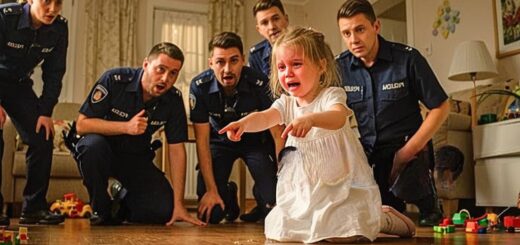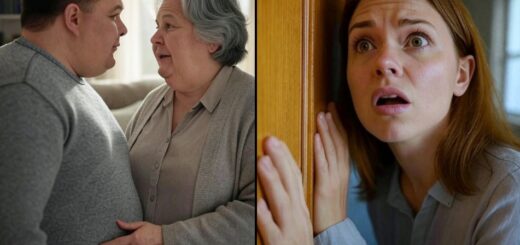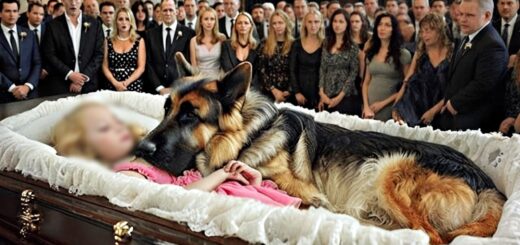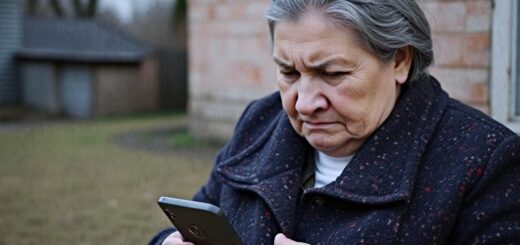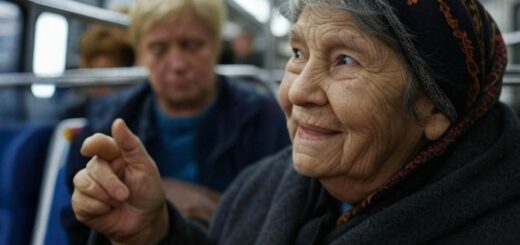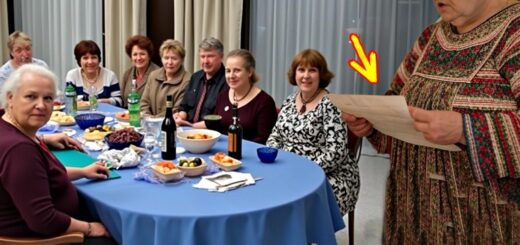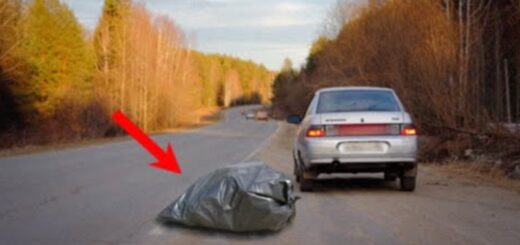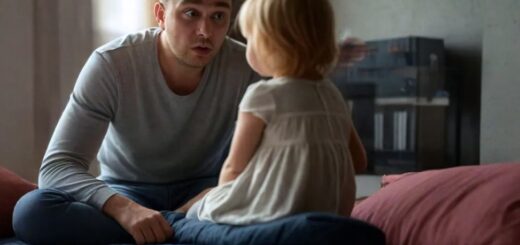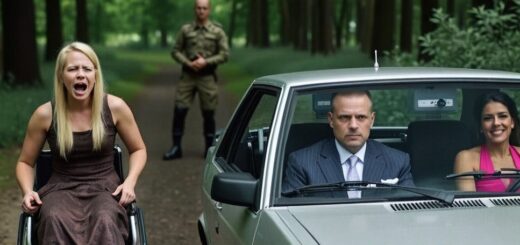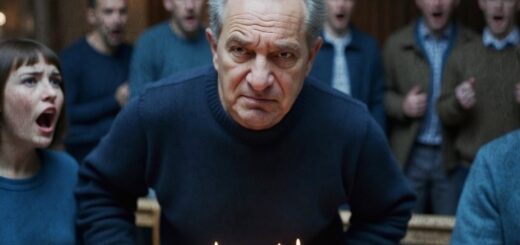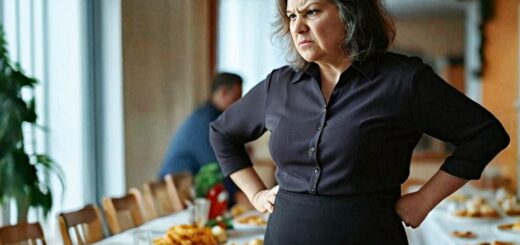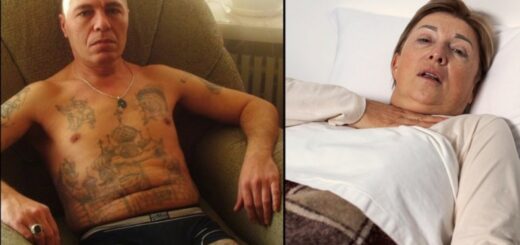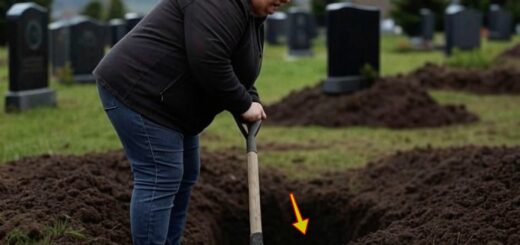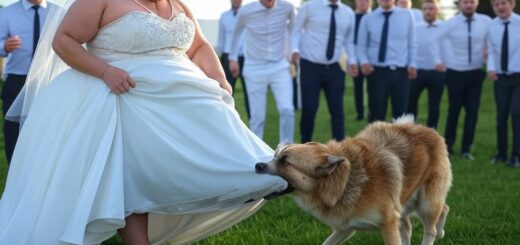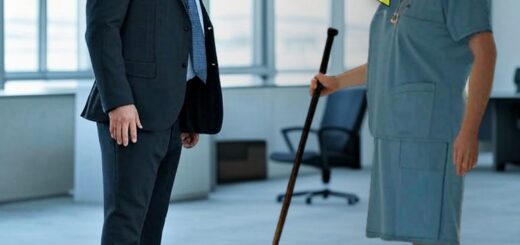“Dad isn’t dead, he’s under the floor,” the little girl said, police started digging…
Rose then presented a forensic handwriting analysis comparing Martha’s writing with threatening notes found in Julian’s journal. The conclusion, the handwriting matched, including pressure consistency and distinctive looped, R, shapes belonging to the same person. One note stood out.
If you leave me, I’ll make sure you have no one left to leave. Mark read it aloud, then closed his eyes. This wasn’t a sudden emotion.
It was a structured plan. On the morning of November 14, the state of Illinois Provincial Court opened the preliminary hearing in the case of Martha Grant murdering her husband, Julian Grant one of the most shocking cases of the year. Although it was only the first hearing, dozens of reporters, journalists, and citizens filled the courthouse lobby.
As the courtroom doors opened, all eyes turned to the woman in a light gray prison uniform Martha Grant. She didn’t bow her head, didn’t hide her face. She walked straight ahead, her gaze cold.
Beside her was attorney Victor Anderson, his expression tense but professional. Mark Rivers and prosecutor Rose Martin were already seated. In the public gallery, Carol held Anna tightly in her arms.
The little girl wore a white dress and clutched her teddy bear, Peepo. No one had required her to be there, but Anna had said, I want to be at the trial. For daddy.
The court bell rang. Presiding judge John Harris a stern man of Grenadian descent known for his strictness struck his gavel. We begin with the prosecution’s statement.
Rose rose to her feet, her gaze sharp as a blade. Your honor, members of the court. Today, we present not just a murder case but an act of betrayal in its cruelest form, a wife who killed her husband as he turned his back, then buried him beneath the kitchen floor where their little daughter still sat every morning to eat her cereal.
The room fell completely silent. We have conclusive evidence. The defendant’s threatening messages to the victim.
Extracted video showing the violent act with a blunt object. Financial records indicating suspicious cash withdrawals and untraceable transfers. And above all, the testimony of the victim’s young daughter who unknowingly revealed the entire truth with one simple sentence, Daddy is under the kitchen floor.
Rose turned toward the jury. We cannot let this child grow up in a world where silence after murder can be weaponized especially the silence of a child. Soft applause echoed from the back row.
Judge Harris struck his gavel, order. Victor rose and walked to the center of the courtroom. I do not deny that what Martha did was wrong.
But I ask the court to understand some people are pushed to their limits. Martha was controlled by Julian, emotionally abused for years. She acted in a state of psychological breakdown terrified of losing her child, her home, her entire life.
She is not a cold-blooded killer. She is a desperate mother. Whispers rippled through the room.
Rose stood abruptly. If Martha feared losing her child, why did she do the one thing that guaranteed Anna would lose both parents? Victor didn’t reply. He lowered his head, then said.
Your Honor, with the court’s permission, I would like to present the child’s testimony interpreted by her psychologist through a drawing that captures a child’s truth about the incident. Rose did not object. A police officer placed the drawing on an easel in the center of the courtroom.
It showed a man lying beneath a tiled floor, unevenly stacked tiles surrounding him. Beside him stood a woman holding what resembled a frying pan. And next to her, a little girl stood crying.
The entire courtroom fell into silence. Judge Harris asked, Was this drawing made by the child after the incident? Yes, Your Honor. It was created during a therapy session, without any guidance.
And beneath the picture, she scrawled, Mommy said to be quiet, but I still heard Daddy say he was cold. Martha lowered her head. She no longer dared look at the drawing.
Carol leaned toward Anna and whispered through tear-filled eyes, You’ve told the whole world what kind of man your father was. Midway through the hearing, the judge permitted psychologist Dr. Lucy Bennett to take the stand as an expert witness. She stood before the court, composed yet clearly moved.
Anna is suffering from severe post-traumatic stress disorder. Despite being only four years old, she described the sequence of events with details that match forensic findings. Most notably, she said, Mommy hit hard.
Daddy didn’t speak anymore. Mommy said I had to be quiet. A member of the jury asked, Do you believe a child that age could have imagined such things? Lucy answered firmly, No.
A four-year-old cannot construct such accurate depictions unless they directly witnessed it or heard it so clearly that it became etched into memory. The judge nodded. Thank you, Doctor.
While the child’s testimony cannot be used as formal legal evidence, it will be noted as a critical social factor in this case. The hearing extended into late afternoon. At last, Martha was invited to make her final statement.
She rose and walked slowly to the center of the courtroom, her eyes no longer sharp but hollow and indescribably vacant. I. I have no defense left. I used to think I was the victim.
But when I saw my daughter, holding her teddy bear and drawing pictures of a corpse I no longer feel worthy of calling myself a mother. Mark looked at Martha, then turned away. Richard closed his eyes…
